100 Years of Shipping in ‘The Land of a Thousand Lakes’
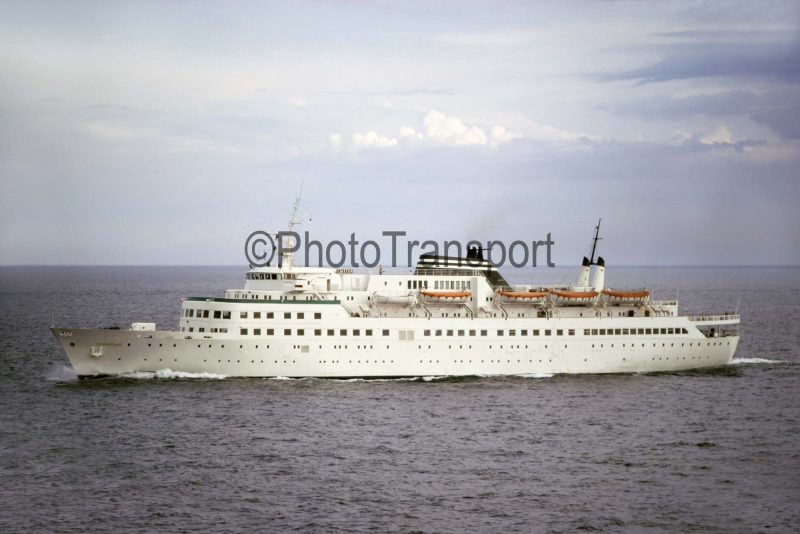
The six Arctic areas of Northern Finland, Northern Sweden, Northern Norway, Siberia, Greenland and Northern Canada have a population of less than three million people. Finland is particularly sparsely populated and remote, with their Saami (Lapp) people having lived in the extreme north of the country for the last two thousand years, and have developed a culture and a living based on reindeer that has survived ever since.
Finland is known as ‘The Land of a Thousand Lakes’, but in fact there are between 55,000 and 60,000 lakes, the majority in the south, where they occupy one fifth of the land surface. Forests cover most of the remaining four fifths with a small percentage of land under cultivation. The lakes are very shallow, most are less than thirty feet deep, with gradual silting up from the detritus of trees to form swamps and peat to cover an area of one third of the country. The land thus cannot support a large population, with emigration as a fact of life and a daily occurrence, and amounting to one million people in the century from 1850 to 1950, most sailing off to the United States of America and the other countries of Central and South America.
The passenger liners of the Finland Steamship Co. Ltd. ran a ‘feeder service’ from Helsinki and other Finnish ports to Hull via Copenhagen, with migrants then crossing England by train to Liverpool to join the big Transatlantic liners in steerage accommodation in the holds. The company was formed by the Krogius family in 1883 and operated a very large fleet of white hulled passenger liners and black hulled cargo ships on many routes in Europe and to ports in North and South America for over a century.
History of Finland
Finland formed part of the kingdom of Sweden until 1819 when it became an autonomous Grand Duchy under the Russian Empire.
In the summer of 1905, protests against the rule of the Tzar of Russia in Russia, Finland, Eastern Europe and the Caucasus grew in strength to reach a pitch of hatred of Russian rule.
Finland declared itself independent on 6th December 1917 along with Ukraine during the Russian Revolution. After a three month civil war in Finland after an attack by Russian Guards that lasted 108 days and cost 30,000 Finnish lives, a democratic constitution was adopted in 1919.
The Soviet regime that came to power in Russia then attempted to regain control of Finland, but was forced to acknowledge its independence in 1920.
Russia attacked Finland in early 1940 after demands for Russian bases in Finland were rejected. Russia then attacked Finland again in a bitter winter war lasting fifteen weeks before Finland was defeated.
A large slice of land was lost to Russia, and then Finland joined with Nazi Germany in attacking Russia in the hope of recovering the lost territory.
The massive war reparations that Finland had to pay to Russia after 1945 cost $570 million, payable by the transfer of ships, machinery and munitions that took seven years to complete by 1952.
The official language today is Finnish, spoken by 94% of the population, with the remainder speaking either Swedish or Saami (Lapp).
History of EFFOA
The Finland Steamship Co. Ltd. was founded by Capt. Lars Krogius (1860-1935) in 1883 in Helsinki. In Swedish, it translates to Finska Angfartygs Aktiebolag, abbreviated to F.Å.A. with a phonetic spelling of this abbreviation being EFFOA. I am fortunate in having a large framed painting by Harry Hudson Rodmell (1896-1984) in my office of the white hulled EFFOA passenger liner Ariadne of 2,558grt completed in March 1914 by the Lindholmens yard in Gothenburg with accommodation for 184 First Class passengers, 84 Second Class passengers and 24 Third Class passengers. She was built for the Helsinki to Stettin service but served on most of the EFFOA passenger routes, and the captions at the foot of the painting tell me she was running on the Helsinki to Stettin route at this time, with the passenger liner Astraea running from Helsinki to Lubeck, and the passenger liner Wellamo running from Helsinki to Copenhagen. The painting is of a bow view of Ariadne steaming at speed out of port, and because this was painted to attract tourists to Finland, the header is ‘Finland – The Land of a Thousand Lakes’. The painting dates from between 1927 and 1930, as Astraea was sold in 1930 and Wellamo was built in 1927.
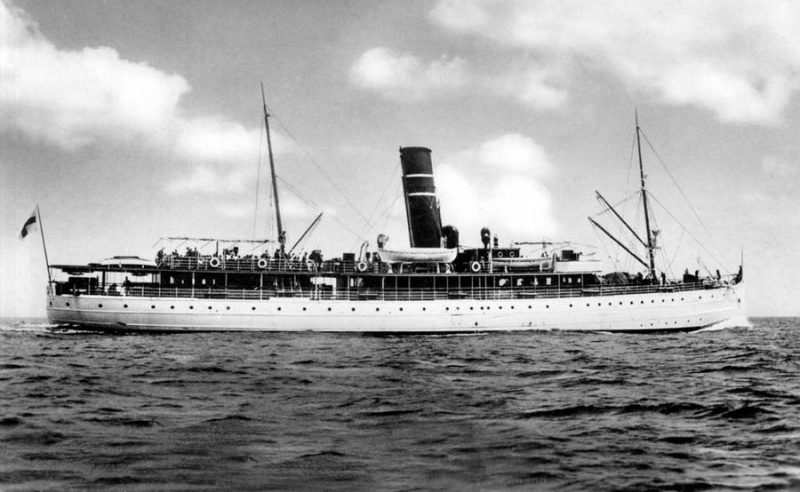
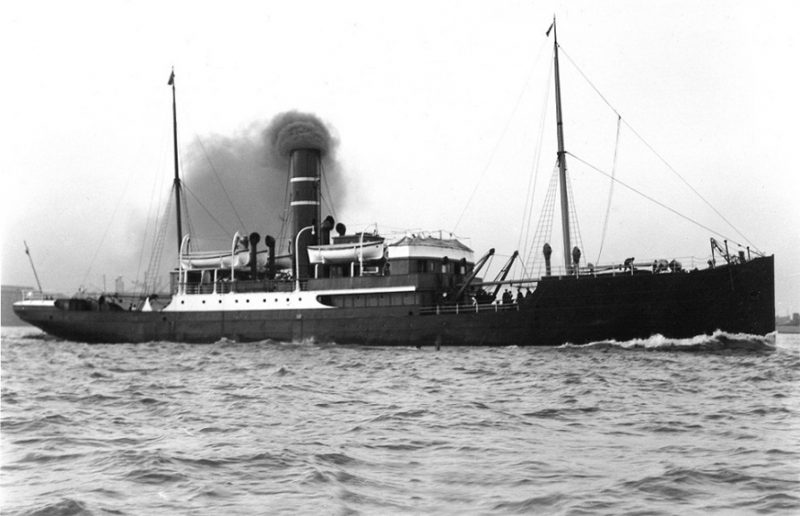
Ariadne was the not the first of these lovely small white hulled liners with big black funnels sporting two narrow white bands. The aim of Capt. Lars Krogius was to establish regular lines with other countries using Finnish owned ships. Thick ice in winter in the Gulf of Finland precluded the use of Helsinki (Helsingfors at this time) until ice strengthened vessels such as Capella of 1,102grt was completed in 1888 with the aid of a State loan. Hanko, the most south westerly port in Finland and one hundred miles west of Helsinki was used instead in winter, and ran an uninterrupted winter service to Copenhagen and Hull from 1898. Three Finnish owned pairs of sister passenger steamers were used on the Hull service, the first was commissioned in 1883/84 as Sirius and Orion of 1,085grt from a Bremen yard, the second pair was commissioned in 1891 from Tyneside as Urania and Astraea of 1,118grt, and the third pair were commissioned in 1898/99 as Arcturus and Polaris of 2,017grt from the Gourlay yard at Dundee. The latter pair could accommodate eighty First Class passengers ‘midships in some style, and all six steamers carried around 180 steerage passengers in the ‘tween decks and dormitories at their sterns.
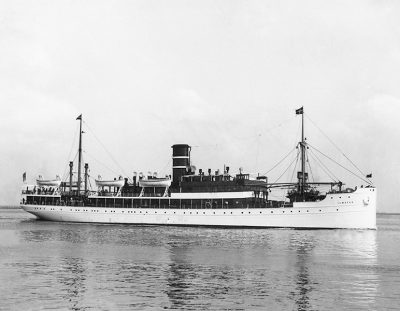
The white hulled passenger steamers Von Dobeln of 666grt, Wasa of 610grt and Finland of 551grt, each with accommodation for one hundred passengers in two classes, were purchased in 1892 together with their services from St. Petersburg to Helsinki and Stockholm. The routes from Helsinki to Stettin and Lubeck were also established in the mid 1890s by these steamers, along with services to Reval (Tallinn) in Estonia, Riga in Latvia and Libau (Liepaja) in Lithuania. Two white hulled passenger steamers were built in 1897/98 by the Gourlay yard in Dundee as Wellamo and Oihonna of 1,050grt for the Stockholm to Helsinki and St. Petersburg routes, plus summer cruises to Spitzbergen and the North Cape. Wellamo became a war loss in World War I, but Oihonna survived two world wars to open the new Helsinki to Travemunde in 1954, and ran this service for six years until broken up after a career of 62 years.
The largest and best steamers were reserved for the service to Copenhagen and Hull, with a fleet of eight white hulled passenger steamers in service in August 1914 on the outbreak of the Great War. Urania had been lost in February 1913 in a collision with the steamer Fancy of Tonsberg, and was replaced by Urania (2) of 1,934grt purchased from STGM of France with accommodation for 102 First Class, 48 Second Class and 450 steerage passengers, the latter in the ‘tween decks and dormitories at the stern. The other seven white hulled passenger steamers operated either to Hull or to the other Baltic countries as Sirius of 1884, Orion of 1884, Astraea of 1891, Arcturus of 1898, Polaris of 1898, Ariadne of 1914 and Titania of 1908, all with tall black funnels and two very tall masts. Ariadne was described earlier, while Titania of 3,463grt was the largest member of the fleet, coming from the Gourlay yard with accommodation for 86 First Class, 68 Second Class in some luxury, with 585 steerage passengers in cramped conditions in the ‘tween decks and stern dormitories.
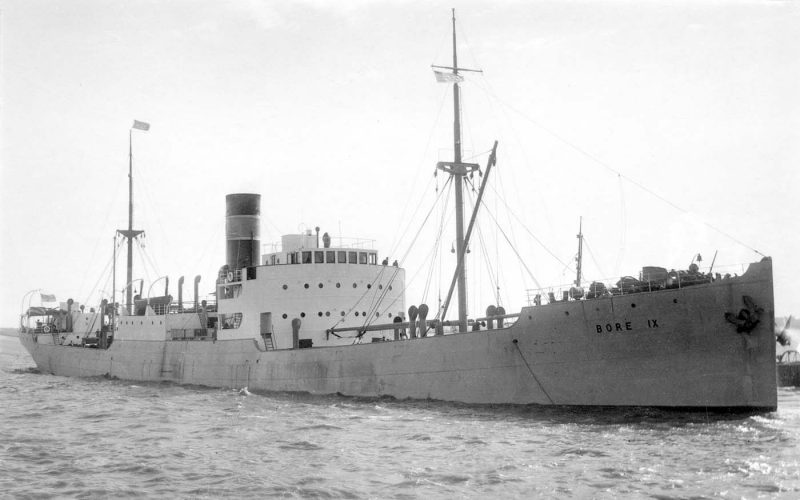
The fleet of passenger and cargo ships numbered thirty vessels in August 1914, and unfortunately eight of the nine vessels that were outside Baltic waters at this time were lost to enemy action as they were requisitioned by the British Government. Compensation for the losses was never paid, as the war with Russia and takeover of Finland by Russia in 1919 would have required the approval of the Russian Government. The EFFOA fleet in 1921 comprised thirty steamers with the sister cargo ships Argo and Regulus of 2,200dwt completed that year in a Dutch yard.
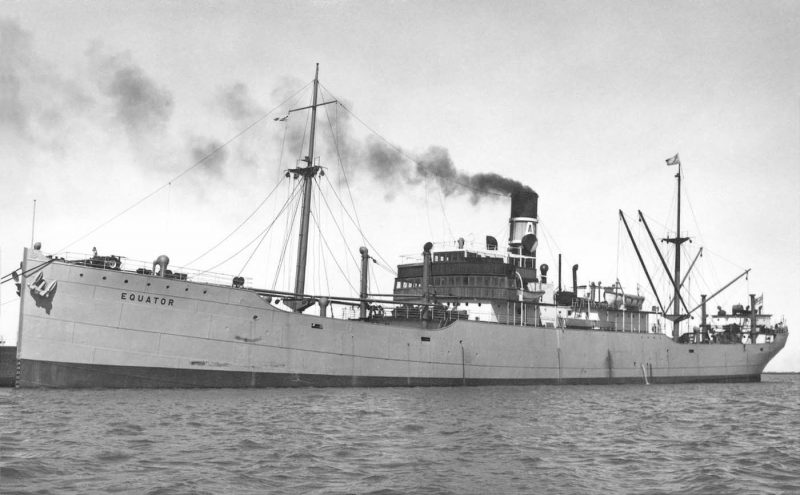
The white hulled passenger liners now included Arcturus of 1898, Ariadne of 1914, Astraea of 1891, Orion of 1884, Oihonna of 1898 and Von Dopeln. Five more replacements for the passenger fleet were completed or purchased between 1925 and 1937 as Oberon of 3,008grt from the Penhoet yard in France in 1925, Wellamo of 2,047grt from the Burmeister & Wain yard in Copenhagen in 1927, Ilmatar of 2,365grt from the Burmeister & Wain yard in 1929, the purchased Polaris (2) of 1,525grt from a Stettin yard on 17th October 1933, and Aallotar of 2,916grt from a Danish yard at Elsinore in 1937. Polaris (2) had accommodation for only 78 passengers in two classes and had been built back in 1912 as Prinzessin Sophie Charlotte, whereas Aallotar had the largest accommodation for 180 passengers in two classes.
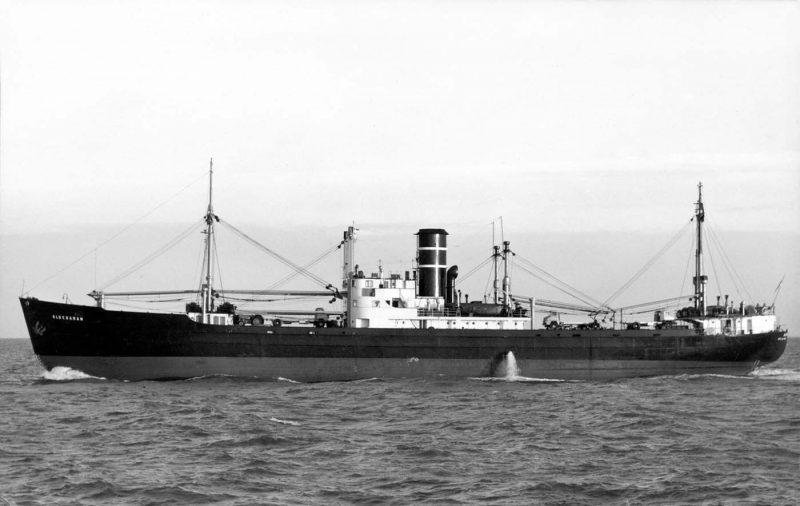
Ilmatar served on the Helsinki to Stettin, Lubeck and Tallinn routes, whereas Aallotar was reserved for the best route to Copenhagen and Hull. Ilmatar at 2,365grt was the largest vessel in the EFFOA fleet of forty white hulled passenger ships and black hulled cargo ships when completed in 1929. Astraea of 1891 was sold in 1930, Orion of 1884 was wrecked outside Helsinki on 28th December 1931, but the worst fate was reserved for Oberon. She collided head on in fog in the Kattegat on 19th December 1930 with her fleetmate Arcturus of 1898 and sank with the loss of 24 of her 61 crew members plus seventeen passengers. She sank in just over four minutes, and tragically the two passenger ships were commanded by brothers, Capt. Eric Hjelt in command of Oberon and Capt. Ossi Hjelt in command of Arcturus. Two of those lost were the wife and daughter of Capt. Eric Hjelt. One can only feel the greatest sympathy for the Hjelt brothers and their wider family and friends.
Finland South American Line
In 1926, Capt. Lars Krogius was made President of the Board of Administration of EFFOA, and he died later in 1935 at the age of 75 years, with control of the company having passed to his brother, Axel Krogius (1877-1945). Axel wished to move into the deep sea liner trades, and formed jointly in 1926 the Finland South American Line with Bore Line of Abo (Turku). The service was from Turku, Helsinki, Gdynia, Rotterdam, Antwerp and Le Havre to Montevideo, Buenos Aires, Bahia Blanca and Rosario.
The first steamers on the liner service were the recently purchased EFFOA steamers Equator 4,091/1901 and Mercator 4,106/1904, completed at Hartlepool by the Furness, Withy & Co. Ltd. yard as Manchester Exchange and Manchester Mariner respectively. The Bore Line first steamer on the service was Bore VIII 4,528/1907 and had been purchased in 1926 under the name of Frank Sutton, and the second Bore Line steamer was Bore IX 4,512/1909 completed by the MacMillan yard for Burrell as Srathan and purchased in 1928 as Queensbury from Capper, Alexander.

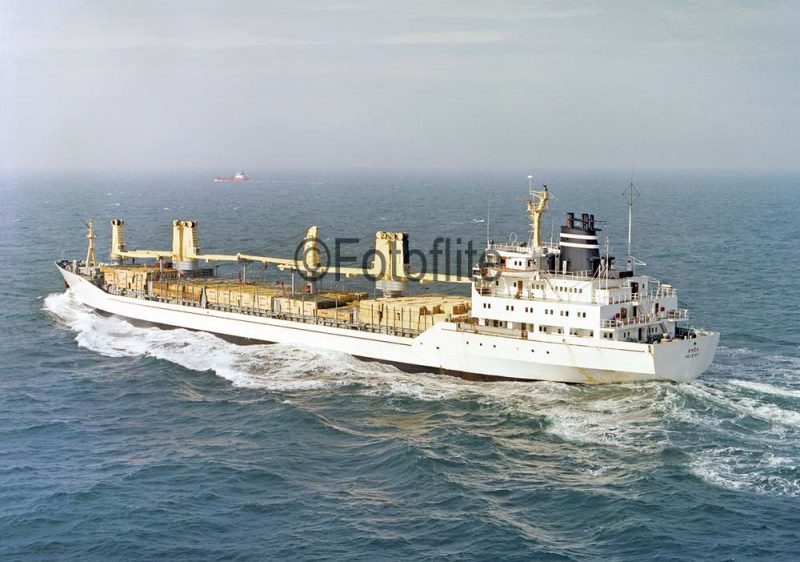
Axel Krogius set up Rederi A/B Atlanta in 1933/34 with the purchase of Atlanta 4,595/1911 from Striclk Line, having been completed by the Gray yard in Hartlepool as Turkistan, and Aura 4,763/1907 purchased from Capper Alexander as Tenbury. Angra 4,660/1920 was purchased in 1937, Anja 4,836/1914 in 1938, and two new motorships of 7,200dwt were delivered in 1938 from the Crichton Vulcan yard at Turku as Atlanta and Aurora. Bore Line contributed the new sister motorship Bore X of 7,200dwt in 1938 from the Gotaverken yard in Gothenburg. The Bore Line and Rederi A/B Atlanta had black funnels with white ‘AL’ on a central blue band between two narrow white bands, but the EFFOA steamers of Equator, Mercator and Navigator 5,656/1921 (purchased in 1935) wore EFFOA black funnels with two narrow white bands as they also called at North American ports. The first Equator was sold for breaking up in 1939, and Equator (2) was the name given to transferred Atlanta from Rederi A/B Atlanta later in 1939. The Finland South American Line had a useful fleet of ten vessels on the outbreak of World War II, with three of them having accommodation for a dozen passengers.
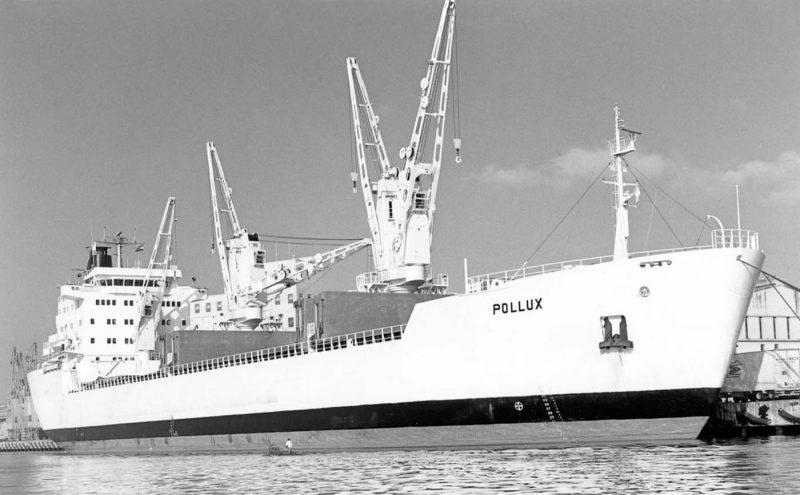
The three masted barque Favell was used as a sail training ship by EFFOA in the late 1930s to train a new generation of Finnish deep sea seamen with accommodation for thirty cadets.
The sailing ship fleet of Gustaf Erikson of Mariehamn in the Aland Islands was also well remembered for his fleet of four masted barques participating in the grain trade from Australia, including Lawhill, Archibald Russell, Elakoon, Killoran, Moshulu, Pamir, Passat, Penang, Pommern, Viking, Warma and Winterhude.
EFFOA had a big fleet of 58 ships on the outbreak of World War II engaged on its European passenger and cargo trades, and on the Finland South American Line. Many ships were lost to enemy action, and EFFOA was forced to part with no fewer than 23 survivors as war reparations to Russia, the handover included the white hulled passenger liners Ilmatar, Aallotar, and Polaris. Ariadne of 1914 was also to be handed over to Russia but ran aground on her delivery voyage to Russia, and was reclaimed by EFFOA and reconditioned and lengthened to sail on until broken up in 1969 at Helsinki after a career of 55 years.
The Finland South American Line returned to South American waters in 1947 with three ships in one EFFOA vessel, and two Bore Line vessels, the motorship Bore VIII 5,432/1924 purchased in 1947 as Silverlarch from Silver Line, and the surviving Bore Line steamer Bore IX. The EFFOA vessel was the pre-war motorship Aurora, which had sailed for the U.S.M.C. from 1942 to 1947 as Rosemount before being returned to EFFOA in 1947 and regaining her name. EFFOA then built ten new motorships of up to 8,500dwt between 1952 and 1963 as Atlanta of 1952, Arica of 1954, Atalaya of 1954, Asynga of 1957, Aymara of 1957, Angra of 1957, Actinia of 1958, Araguaya of 1960, Aconcagua of 1961 and Argo of 1963. Aconcagua of 8,125dwt was typical of these ten ships when launched on 23rd April 1960 at the Turku yard of Wartsila. She had a length of 140.0 metres, beam of 17.7 metres and her five holds were served by a large number of derricks on bipod masts. She had a service speed of sixteen knots from a nine cylinder two stroke single acting Sulzer diesel of 6,300 bhp supplied by her builders.
Bore Line withdrew from the Finland South American Line in 1966 after thirty years of participation, but a final pair of EFFOA reefers was completed for South American and Caribbean service at the South Bank yard of Smith’s Dock Co. Ltd. in November 1971 and March 1972 as Aurora and Atlanta of 13,540dwt. Eight pedestal cranes of up to 12.5 tonnes capacity and quick folding MacGregor hatch covers twinned at holds three to seven were some of their modern features, together with a high service speed of twenty knots from a nine cylinder Sulzer diesel of 13,365 bhp.
Post-War European EFFOA Fleet
Birger Jarl Krogius (1901-1996), the son of founder Capt. Lars Krogius, was in control of EFFOA in post-war years, and he chose not to resume passenger sailings from Helsinki to Hull.
The planned new passenger liner Astrea for the Hull service had been launched in October 1939 at Turku but was laid up incomplete throughout the war and was sold in 1944 in a bomb damaged condition to Svea Line of Sweden, but secretly it was arranged for her to be sold on at the end of the war to Bergen Line. She was completed as Astraea in September 1945 for Newcastle to Bergen service and other Continental services of Bergen Line until sold for Faroes service in November 1967.
Instead, over a dozen EFFOA black hulled cargo ships ran into the Surrey Docks on the Thames with timber, forestry products and butter during the two decades from 1945 to 1965, including Aldebaran, Argo, Astraea of 1956, Baltic, Canopus, Capella, Clio, Hektos, Heros, Najaden, Polaris of 1956, Rigel, and Salla of 1957.
Rigel completed in 1950 was an engines ‘midships steamer with ten derricks arranged on two masts and two sets of posts to serve her twin holds. The more modern Astraea and Polaris of 1956 had pronounced icebreaker ‘knuckle’ bows, and were completed at Heusden in Holland and could carry 2,260 tonnes of cargo in three holds, two forward and one aft of the machinery spaces. The loaded service speed was sixteen knots from a very powerful M.A.N. diesel of 3,250 bhp to enable the pair to maintain a regular uninterrupted service even in thick ice in winter.

The Continental cargo services from Helsinki to Stockholm, Copenhagen, Antwerp, Amsterdam, Rotterdam, Bremen, Hamburg, Lubeck, Kiel, Gdansk, North French ports, Portugal, Spain, Italy and Eastern Mediterranean ports tended to be carried in new larger vessels including Antares, Ariel, Bjarmia, Finlandia, Ostrobotnia, Pallas, Patria, and Rhea, all of 3,000dwt.
The Mediterranean trades were served by vessels of 4,000dwt and above including Arcturus, Hektos, Inha, Inio, Lapponia, Oihonna, Orion, Pohjanmaa, Sirius, Tellus, Titania and Triton, all of 4,000dwt, increasing to the two biggest Mediterranean traders, Hesperus and Virgo of 6,750dwt completed in 1964. A large fleet of 55 cargo ships was being traded in 1960 including two new tankers from the Jan Smit yard at Alblasserdam in Pensa and Presto of 19,500dwt, and the older pre-war Pansio of 11,800dwt.
Silja Line Service
The white hulled EFFOA passenger ship Wellamo of 1927 was the first ship to resume passenger operations between Helsinki and Stockholm in 1945, and she also restarted passenger operations between Helsinki and Tallinn in 1965. The old Arcturus ran to Antwerp until scrapped in 1957, but then EFFOA concentrated on its Baltic passenger routes. Silja Line was founded in 1958 by EFFOA, Bore Line, and Rederi A/B Svea for passenger services between Helsinki and Stockholm. EFFOA built four new passenger ferries between 1964 and 1972 for this service and its other passenger services to Copenhagen and Travemunde, starting with Ilmatar of 7,155grt with accommodation for 226 First Class, 226 Second Class and 748 deck passengers in 1964 as the first diesel powered passenger liner in the EFFOA fleet.
The ro-pax Finlandia followed in 1967 with accommodation for 800 passengers and 60 cars for the Helsinki to Travemunde route, the bow and stern loader Floria in 1970 with accommodation for 1,000 passengers, 200 cars and 28 trailers for the Turku to Mariehamn and Stockholm route, and lastly Aallotar of 7,800grt built at Nantes in 1972 as a bow and stern loader with accommodation for 1,000 passengers, 150 cars and 28 trailers for year round traffic from Helsinki to Stockholm. On the overnight runs, Floria and Aallotar could sleep up to 440 berthed passengers in cabins.
Skandia of 3,593grt was completed in 1961 for Silja Line service and was transferred to EFFOA ownership during 1973/74. The twin funnelled Skandia (2) ran on Silja Line service from completion in 1973 as Bore I, and was transferred to EFFOA ownership during 1980/83. The twin funnelled larger ferry Wellamo of 12,348grt was completed in 1975 along with her sisters Svea Corona and Bore Star, but was sold in 1979 to DFDS and renamed Dana Gloria for the Tyne to Esbjerg service.
The Silja Line service from Helsinki to Stockholm was then updated with very large superferries such as Finlandia of 1981 of 26,000grt and her sister Silvia Regina, and the Turku to Stockholm route was served by the larger Svea and Wellamo of 35,000grt in 1985/86. Finlandia later became Queen of Scandinavia in 1990 for DFDS North Sea passenger routes. These important Finland to Sweden passenger links became jointly owned by Johnson Line of Sweden and EFFOA, and traded as Effjohn from 1990 with EFFOA then ending its long history.
Finnlines
Three freight ro-ros were completed for EFFOA by the Rauma Repola yard in Finland for forestry products services to Hull and Felixstowe in 1972/73 as Antares, Orion and Sirius of 5,600dwt. In 1975, EFFOA founded Finncarriers together with Finnlines as a jointly owned freight operations venture. Finnlines had been formed in the Autumn of 1947 to operate cargo vessels owned by Merivienti O/Y in the Finnish forestry products, paper and timber trades with vessels with names with the prefix ‘Finn’, and had a big fleet of forty vessels by 1975. EFFOA gave up its passenger route between Finland and Germany, the ships used on the route were sold to Finnlines. In 1980, both Finncarriers and Finnlines became fully owned subsidiaries of EFFOA.
In that year, the combined EFFOA and Finnlines fleet was 32 ships, with the Finnlines parent company of Enzo-Gutzeit O/Y owning half of the tonnage sailing under the Finnish flag. The fleet comprised three passenger ferries, four ro-ros, five bulkers and twenty general cargo ships. The white hulled bulkers were Pollux and Patria of 17,160dwt equipped with five yellow pedestal cranes, and Ariel, Pallas and Rhea of 7,800dwt equipped with six yellow pedestal cranes.
The gas turbine powered twin funnelled superferry Finnjet of 32,940grt was the star of the Finnlines fleet as the longest and fastest ferry in the world on her completion in April 1977 for Finnlines. She had accommodation for 1,686 passengers, 380 cars and thirty trailers on the Silja Line route from Finland to Germany. She was powered by two Pratt and Whitney gas turbines and two 18 cylinder Wartsila Pielstick diesels to give a service speed of 33.5 knots (38.6 mph) via twin propellers. She was ice strengthened and a very unique ship with two very different forms of propulsion, with the gas turbines providing the high speed and the diesels providing a lower and more economical cruising speed. She was owned 75% by EFFOA and 25% by Enso-Gutzeit O/Y from 1980 to 1986, and wholly owned by EFFOA from 1986 to 1989.
Finnjet was finally broken up in September 2008 at Alang in India under the name of Kingdom after a varied career of 31 years. She was still the longest ferry in the world at 213.0 metres at the end of her career.
Postscript
Two of the many EFFOA passenger routes were iconic, the first being from Helsinki or Turku to Hull via Copenhagen that lasted 56 years and was served by very elegant white hulled steamers carrying up to one million Finns to new lives.
The second was the summer daylight sailings from Stockholm to Turku via Mariehamn in the Aland Islands and vice-versa, on which travellers could enjoy the many beautiful archipelagos of islands en-route. These islands were not visible in the darkness of the night crossings of the ‘super’ ferries on the main Stockholm to Helsinki route and vice-versa.
I well remember the EFFOA ferry Floria sailing as the Trasmediterranea ferry Villa de Agaete in the Canary Islands on the Santa Cruz de Tenerife to Agaete on Gran Canaria route after her sale in 1979.
EFFOA was the largest shipowning company in Finland and did much to open up the country as a tourist destination. EFFOA also had interests in deep sea trading to North and South America, and later in the worldwide trades with bulk carriers. It also had minority share interests in other Finnish and Swedish shipping companies.

The white hulled passenger liners and ferries, all named after stars and constellations, were a pleasure to see sailing on the Baltic and North Sea routes, and all were strengthened for navigation in ice in winter.
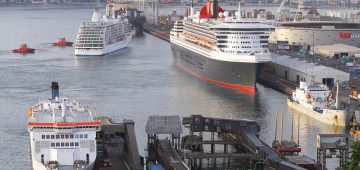



Comments
Sorry, comments are closed for this item